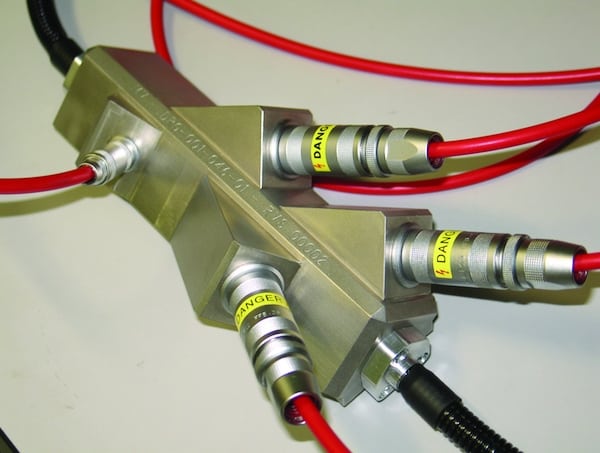The technology - which measures voltage, current, temperature, pressure and vibrations in fibre-optic cables - has been designed by Synaptec, creators of photonic sensors for complex energy systems, in partnership with Strathclyde University.
It uses fibre-optic Brag grating sensors written into the core of the optical fibre used in Britain’s energy and telecoms transmission networks to measure strain and temperature. These sensors are connected to piezoelectric actuators that measure voltage and current.

Taken together, the measurements provide a complete picture of the line. Should a fault occur, the network operator can make fast, low-cost measurements to determine where a fault lies, even if the location is remote, allowing them to fix this quickly and reduce the amount that they are fined for network downtime.
The electricity transmission network in the UK has fibre optic cabling installed on around 75 per cent of all lines, though this will grow to 100 per cent at transmission level in the future. Synaptec’s sensors can couple into this fibre, which runs in parallel with the lines. The sensors make use of a different part of the spectrum of light to the sensing system, avoiding interference with the core functionality of the line. The technology can also track the amount of generation and demand on the grid.
‘The system can be retrofitted or used in new builds,’ said Philip Orr, managing director of Synaptec and an Enterprise Fellow of the Royal Academy of Engineering’s Enterprise Hub. ‘It would be used as an extra layer of backup and functionality, saving companies money. The majority of transmission lines are overhead, and are subject to transient faults - for example, when being hit by lightning - after which power through them can be switched back on safely. However, if a fault occurs on an underground line, it is much more likely that this has a serious cause, where simply switching the power back on could even cause an explosion. Our system allows companies to see the location of the fault quickly, identifying whether it is underground or not.’
The team will trial the technology on UK electricity networks once a prototype is developed. Furthermore, the system could be in use within five years.





Poll: Should the UK’s railways be renationalised?
I'm reminded of the old adage about stupidity is doing the same thing time and time again, expecting different results. The current model simply...